Social
Re-imagining Social Media Platforms as Old Media
When you work in digital marketing, part of your job is to answer the question “what is the deal with social?”
Sometimes you have to work with clients from an older generation who still believe advertorials in magazines are effective (as a consumer, I usually feel cheated). You are also often the one who has to explain how Twitter works to older family members who are not quite ready to hop onto the social bandwagon.
So, for the sake of all social strategists and content marketers out there, here’s a present from me to you: a way to explain new media by comparing it with the traditional media of yore.
Your Blog: The Daily Newspaper
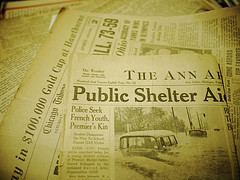 Your blog is the home base for your content. Meanwhile, social media helps pull in people from different social communities to digest that content on your blog.
Your blog is the home base for your content. Meanwhile, social media helps pull in people from different social communities to digest that content on your blog.
The foundation of every great media company is an amazing abundance of content on a regular basis in an easy-to-read format, like the daily newspaper. Your blog should operate as that strong base, and other social platforms will help support it as you share topics about your business and current events.
People will subscribe because of your current stories and informational articles with snappy titles and an engaging layouts. Make sure to continuously solicit feedback and opinions to continue the conversation.
Tumblr: A Magazine Rack
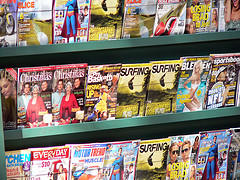 Tumblr is an interesting case, because it can be both a platform and a medium. It’s most like a magazine because of the variety of content it holds and its browsability.
Tumblr is an interesting case, because it can be both a platform and a medium. It’s most like a magazine because of the variety of content it holds and its browsability.
Tumblr users browse through their feeds like people browse through magazines, going through all of the posts like a page-flipping fashionista reading Vogue.
Use a variety of visually engaging pieces of content to catch readers’ attention. If you’re cool enough, people will subscribe, or follow you. Like a magazine rack filled with alluring cover photos, make your Tumblr account stand out somehow so people will “pick it up.” Content should always be related to what is currently trending or being discussed. People follow and pay attention to the media because they want to know what is going on in their world and get news first.
YouTube: Your TV
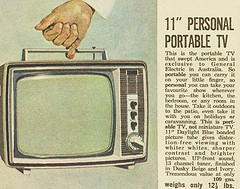
YouTube is the national broadcasting station, more so after its redesign. The new YouTube redesign looks even more like television with the homepage featuring channels instead of single videos. To support your channel, you need to make sure there is programming that is available on a regular schedule — don’t upload 45 videos at once, instead, disperse them over time.
Just like broadcast television is organized by channels, and then television shows, content on YouTube should be organized in playlists whether they are how-tos, commercials, products videos, user-generated content, etc. Keep viewers tuning in by offering exclusive content, and as Squidoo points out, make sure even the video thumbnails pique a viewer’s interest so that he or she tunes in.
Twitter: The Radio
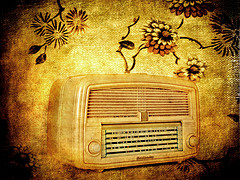 Twitter is a radio station — people tune in at different times of the day, and as a result, tweeters sometimes repeat themselves, without consequence. Twitter allows you to create your own tweeting style, whether informative, clever, witty, or shocking.
Twitter is a radio station — people tune in at different times of the day, and as a result, tweeters sometimes repeat themselves, without consequence. Twitter allows you to create your own tweeting style, whether informative, clever, witty, or shocking.
As the DJ for this radio station, you can have a personality that followers will want to reply to — which in radio speak, is like a call in. Twitter allows for a personal one-on-one conversation, like when a DJ takes song requests. DJs can also create events or run promotions. And lastly, they can even bring on a guest, which in the Twitterverse is like hosting a tweetup or a twitterview.
Facebook: The Community Bulletin Board
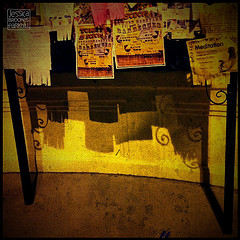 Last but not least, Facebook is like the town community board. Facebook is used by people for many aspects of their lives — family, friends, work, their community groups. They pass by their town bulletin board to see what is going on in their community.
Last but not least, Facebook is like the town community board. Facebook is used by people for many aspects of their lives — family, friends, work, their community groups. They pass by their town bulletin board to see what is going on in their community.
When someone “Likes” a brand, they are showing that they feel invested as part of a group and that they are interested in keeping up with the brand. Keep them informed on what is happening with your business and the space you work in.
Final Thoughts
After you explain to Grandma about how Twitter is like the radio programming of her youth, you might start to realize that social media and traditional media are really not so different. At the end of the day, you are still seeding out content to be consumed by users and hoping that people subscribe to keep hearing more.
Get better at your job right now.
Read our monthly newsletter to master content marketing. It’s made for marketers, creators, and everyone in between.




